OUR UPCOMING EXCURSIONS
EXPLORE TAJ MAHAL, BHARATPUR BIRD SANCTUARY, RANTHAMBORE NATIONAL PARK AND JAIPUR "PINK CITY" (5 NIGHTS / 6 DAYS)
- Arrival and departure from Delhi airport
- DEPARTURES: 27th June,24 to 3rd July,24/04th July,24 to 10th July,24/18th July,24 to 24th July,24
- GROUP SIZE: Minimum 4 persons
-
TOTAL EXCURSION COST: US $1990 per person (on twin sharing basis)
(Please note that this is the Ballpark cost for the specific detailed itinerary mentioned below).
WE SPECIALIZE IN CRAFTING PERSONALIZED EXCURSIONS, TAILORED TO THE UNIQUE PREFERENCES AND NEEDS OF OUR DISCERNING CLIENTELE, ENSURING A SEAMLESS AND MEMORABLE TRAVEL EXPERIENCE.
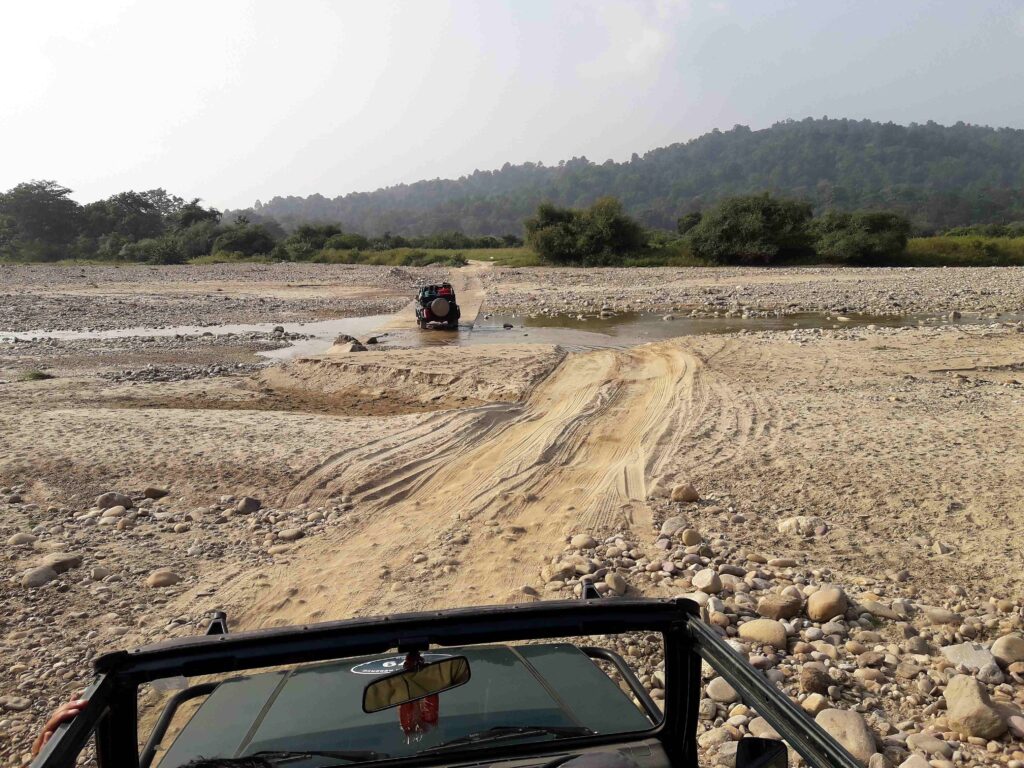
Detailed trip ITINERARY
- Accomodation: 4 star hotels /boutique resorts (depending on availability)
- Transfers: AC vehicles
- Cost: US $1990 per person (on twin sharing basis)
Duration:
- Total: 5 nights / 6 days
- Delhi: 1 night stay (arrival)
- Agra (visit Taj Mahal) / Bharatpur (visit Keoladeo National Park): 1 night stay
- Ranthambore: 2 nights stay / Jaipur (visit Amer Fort): 1 night stay
Inclusions: Airport pick-up/ drop; 4 star / boutique resort accommodation on twin sharing basis (depending on availability), transportation in AC vehicles; all meals included (except lunch on Day 1 in Delhi), bottled drinking water, park / monument entry fees.
Day 1: Delhi Arrival and Night Stay
Exclusions: International / domestic air tickets; India visa fees; camera fees in park / monuments; bar and liquor bills; personal refreshment drinks and snacks; laundry; personal mobile phone expenses; emergency rescue / medical treatment; travel and medical insurance; extra adventure activities.
- Arrival in Delhi: Welcome to Delhi, the capital city of India.
- We will receive you at the airport and transfer to your hotel. Meet, greet and tour briefing.
- Check-in and rest
- Meals: Welcome dinner at hotel restaurant. Breakfast and dinner only
Day 2: Delhi to Agra and Bharatpur, Rajasthan
- 6 am: Drive to Agra: Journey to Agra (Approx. 230 km, 4-5 hours’ drive)
- Visit Taj Mahal: Explore the breathtaking Taj Mahal, one of the Seven Wonders of the World
- Lunch: Enjoy local cuisine at a restaurant
- Drive to Bharatpur, Rajasthan (Approx. 60 km, 1-2 hours’ drive)
- Check-in at your hotel in Bharatpur and take some time to relax
- Meals: All meals included
Day 3: Bharatpur Bird Sanctuary and Ranthambore National Park
- 6.30 am: Start your day with a visit to the Keoladeo Bird Sanctuary
- After the morning excursion, enjoy lunch at the hotel
- Drive to Ranthambore: Depart for Ranthambore National Park (Approx. 250 km, 4-5 hours’ drive)
- Check-in at your Ranthambore hotel and relax
- Meals: All meals included
Day 4: Ranthambore National Park Safari
- 6 am: Morning Safari: Embark on an early morning safari to spot wildlife, and if you are lucky, you may see the majestic Royal Bengal Tiger
- After the morning safari, return to the hotel for breakfast
- After lunch at the hotel, head out for another exciting afternoon Safari at 3 pm
- Leisure Time: After the safari, you can relax at the hotel or engage in optional activities
- Meals: All meals included
Day 5: Ranthambore to Jaipur
- Enjoy breakfast at the hotel before departing for Jaipur
- Drive to Jaipur (Approx. 180 km, 3-4 hours’ drive)
-
Check-in at your Jaipur hotel.
After lunch at the hotel, visit Amer Fort, a magnificent fortification with stunning architecture - Explore Local Market: Take some time to explore the vibrant local markets of Jaipur, known for handicrafts and textiles
- Meals: All meals included
Day 6: Jaipur to Delhi Departure
- Start your day with early breakfast at the hotel
- Drive to Delhi: Depart for Delhi to catch your flight from the Delhi airport (Approx. 280 km, 4-5 hours’ drive)
- Airport Drop-off: Our representative will assist you with the airport transfer and bid you farewell
- Meals: Breakfast at the hotel included
EXPLORE INDIA'S RICH HERITAGE: AGRA, BHARATPUR, RANTHAMBORE, AND JAIPUR

Agra, Uttar Pradesh
Agra, located in the northern state of Uttar Pradesh, India, has a rich history that dates to ancient times. However, it became most prominent during the Mughal era. In the 16th and 17th centuries, Agra served as the capital of the Mughal Empire, under the reign of Emperor Akbar, Jahangir, and Shah Jahan. The city flourished as a centre of art, culture, and architecture during this period.
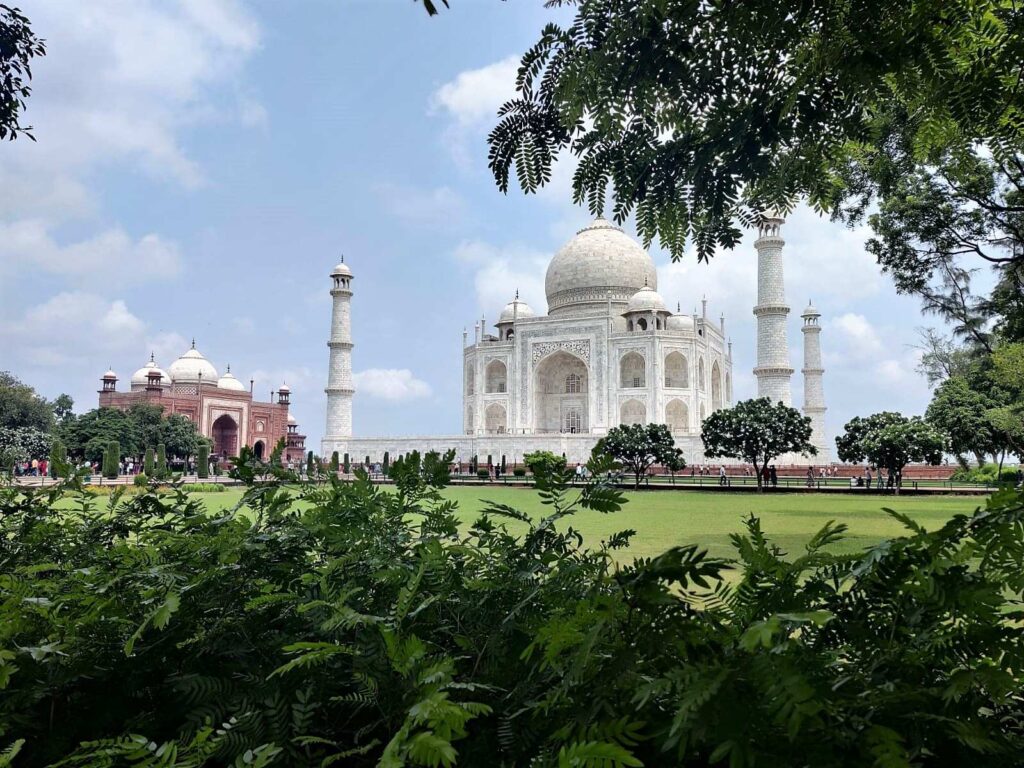
Taj Mahal (UNESCO WORLD HERITAGE SITE) Agra, Uttar Pradesh
Taj Mahal, the “crown jewel” of Agra, was built by Emperor Shah Jahan in memory of his beloved wife Mumtaz Mahal, who passed away during childbirth. Construction of the Taj Mahal began in 1631 and was completed in 1653 (it took approximately 22 years!). The exquisite white marble mausoleum is a blend of Islamic, Persian, and Indian architectural styles, and it is celebrated as one of the most beautiful and iconic buildings in the world. In 1983, the Taj Mahal was designated as a UNESCO World Heritage Site, attracting millions of visitors each year from all corners of the globe.
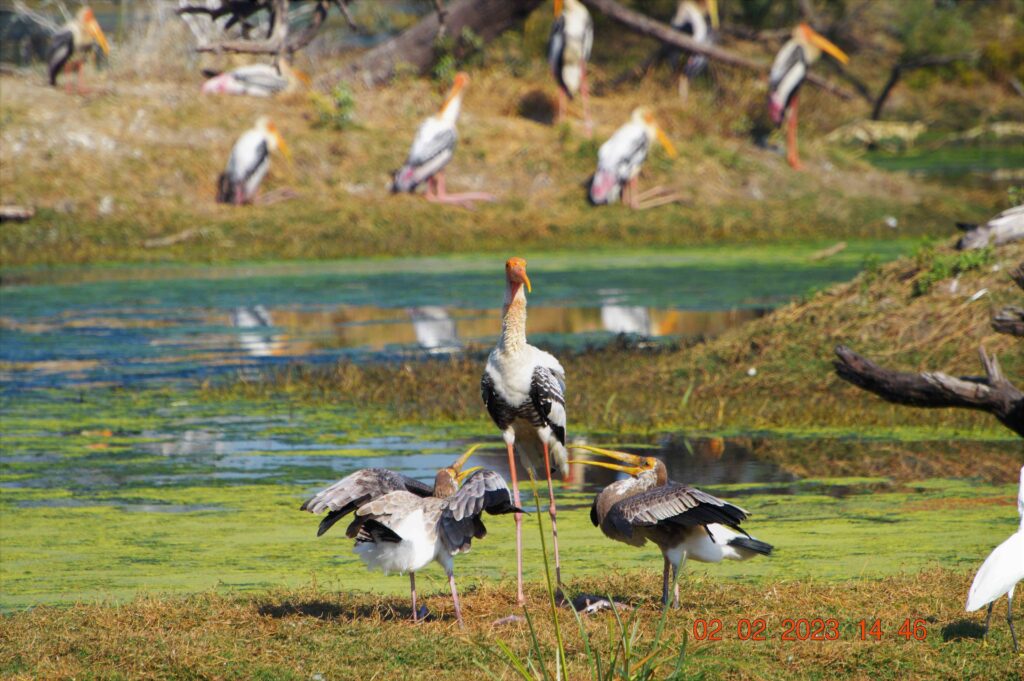
Keoladeo Bird Sanctuary, Rajasthan (UNESCO WORLD HERITAGE SITE)
Bharatpur, located in the northwestern state of Rajasthan, has a history that intertwines with the Jat rulers of the region. The city was founded in 1733 by Maharaja Suraj Mal, a Jat king who established the Bharatpur State. The region prospered under the rule of the Jat dynasty and became known for its strategic location on the trade routes.
The Keoladeo Ghana National Park, also known as the Bharatpur Bird Sanctuary, was created by the Maharajas of Bharatpur as a hunting reserve, but in 1971, due to its exceptional avian diversity, it was declared a protected area and later recognized as a UNESCO World Heritage Site. This is a paradise for birdwatchers and ornithologists. The sanctuary encompasses an area of approximately 29 square kilometres, with a mix of wetlands, woodlands, grasslands and shallow lakes, making it a diverse and thriving habitat for various bird species.
The wetland ecosystem of the sanctuary attracts a vast array of migratory birds, making it a haven for birdwatchers and nature enthusiasts. These diverse habitats are home to 366 bird species, 27 species of mammals, 50 species of fish, 13 species of lizard, 7 amphibian species, 7 turtle species and a variety of other invertebrates.
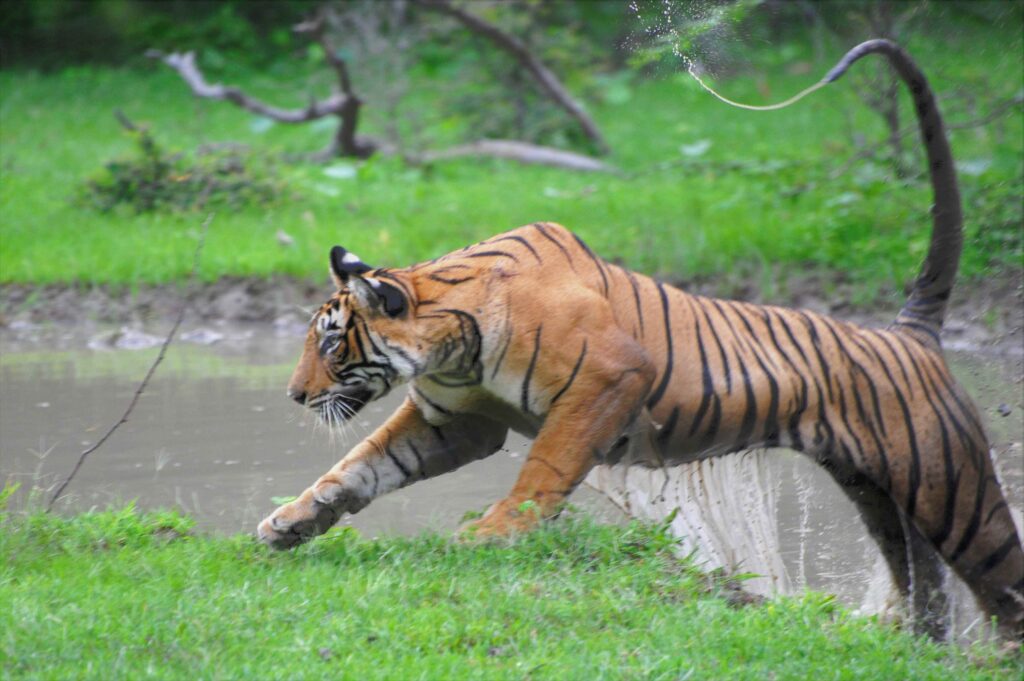
Ranthambore National Park, Rajasthan
Located in the southeastern state of Rajasthan, Ranthambore has a historical background that dates to ancient times. The region was ruled by various Rajput kings and saw several battles for supremacy. The prominent Ranthambore Fort, which dates to the 10th century, stands as a testament to the region's rich history.
Ranthambore National Park covers an area of 1334 square kilometers. Ranthambore was declared as a wildlife sanctuary in 1955 and tiger reserve in 1973. In 1980, it was upgraded to the status of a National Park. Today, Ranthambore National Park is one of the most famous tiger reserves in India and is known for its thriving population of Royal Bengal tigers. The park's diverse wildlife, including various other animal and bird species, attracts wildlife enthusiasts and photographers from around the world.
Ranthambore National Park harbours Bengal tiger, Indian leopard, caracal, jungle cat, rusty-spotted cat, nilgai, barasingha, blackbuck, chinkara, wild boar, chital, sambar, Indian muntjac, striped hyena, dhole, Indian wolf, Bengal fox, Indian jackal, leopard cat, Asian palm civet, Indian grey mongoose, ruddy mongoose, long-eared hedgehog, Northern palm squirrel, Indian porcupine, Indian hare, lesser bandicoot rat, honey badger, Indian flying fox, greater false vampire bat, Indian gerbil, Indian pangolin, sloth bear, southern plains gray langur, rhesus macaque, mugger crocodile. The sanctuary is home to a wide variety of trees, plants, birds and reptiles, as well as one of the largest banyan trees in India.
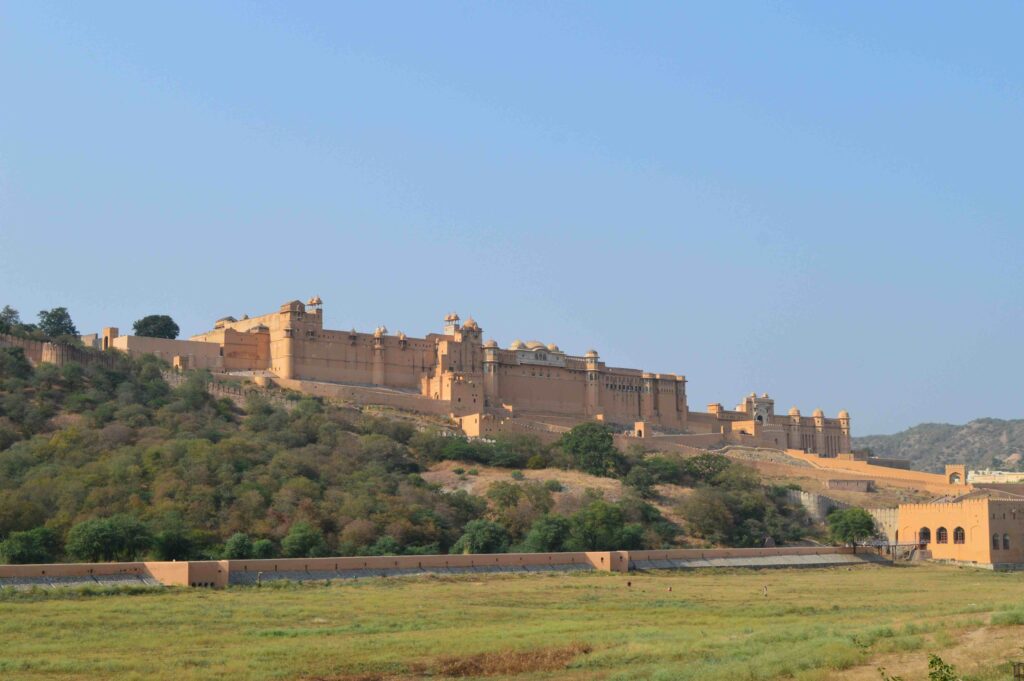
Amber Fort, located 11 kilometers away from Jaipur "Pink City", Rajasthan
Jaipur, the capital city of Rajasthan, was founded in 1727 by Maharaja Sawai Jai Singh II, a Kachhwaha Rajput king.
The city was meticulously planned and designed by Vidyadhar Bhattacharya, an architect and scholar. It was one of the earliest planned cities in India, known for its well-laid-out streets, stunning architecture, and vibrant markets. Jaipur is famously known as the "Pink City" due to the predominant use of pink sandstone in its buildings, which was done to welcome the Prince of Wales (later King Edward VII) during his visit in 1876. The city is dotted with majestic palaces, forts, and gardens, reflecting the grandeur of Rajput and Mughal architecture. Some of the key attractions in Jaipur include the Amer Fort (UNESCO heritage site), City Palace, Hawa Mahal, and Jantar Mantar. The city's rich history, cultural heritage, and colourful markets make it a popular destination for both domestic and international tourists.
